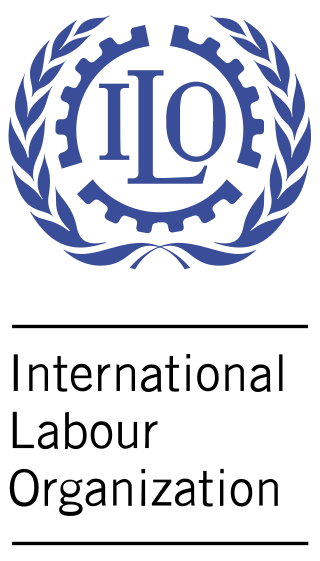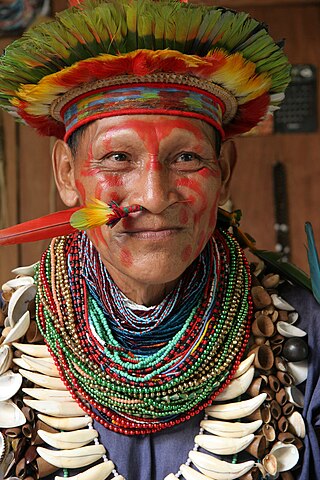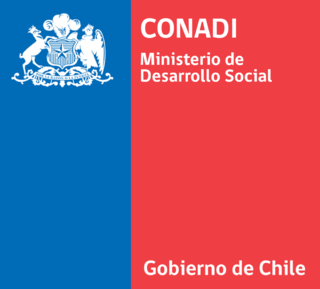
The International Labour Organization (ILO) is a United Nations agency whose mandate is to advance social and economic justice by setting international labour standards. Founded in October 1919 under the League of Nations, it is one of the first and oldest specialized agencies of the UN. The ILO has 187 member states: 186 out of 193 UN member states plus the Cook Islands. It is headquartered in Geneva, Switzerland, with around 40 field offices around the world, and employs some 3,381 staff across 107 nations, of whom 1,698 work in technical cooperation programmes and projects.
International human rights instruments are the treaties and other international texts that serve as legal sources for international human rights law and the protection of human rights in general. There are many varying types, but most can be classified into two broad categories: declarations, adopted by bodies such as the United Nations General Assembly, which are by nature declaratory, so not legally-binding although they may be politically authoritative and very well-respected soft law;, and often express guiding principles; and conventions that are multi-party treaties that are designed to become legally binding, usually include prescriptive and very specific language, and usually are concluded by a long procedure that frequently requires ratification by each states' legislature. Lesser known are some "recommendations" which are similar to conventions in being multilaterally agreed, yet cannot be ratified, and serve to set common standards. There may also be administrative guidelines that are agreed multilaterally by states, as well as the statutes of tribunals or other institutions. A specific prescription or principle from any of these various international instruments can, over time, attain the status of customary international law whether it is specifically accepted by a state or not, just because it is well-recognized and followed over a sufficiently long time.

The Universal Declaration of Human Rights (UDHR) is an international document adopted by the United Nations General Assembly that enshrines the rights and freedoms of all human beings. Drafted by a UN committee chaired by Eleanor Roosevelt, it was accepted by the General Assembly as Resolution 217 during its third session on 10 December 1948 at the Palais de Chaillot in Paris, France. Of the 58 members of the United Nations at the time, 48 voted in favour, none against, eight abstained, and two did not vote.

The International Covenant on Civil and Political Rights (ICCPR) is a multilateral treaty that commits nations to respect the civil and political rights of individuals, including the right to life, freedom of religion, freedom of speech, freedom of assembly, electoral rights and rights to due process and a fair trial. It was adopted by United Nations General Assembly Resolution 2200A (XXI) on 16 December 1966 and entered into force on 23 March 1976 after its thirty-fifth ratification or accession. As of June 2024, the Covenant has 174 parties and six more signatories without ratification, most notably the People's Republic of China and Cuba; North Korea is the only state that has tried to withdraw.
Indigenous land rights are the rights of Indigenous peoples to land and natural resources therein, either individually or collectively, mostly in colonised countries. Land and resource-related rights are of fundamental importance to Indigenous peoples for a range of reasons, including: the religious significance of the land, self-determination, identity, and economic factors. Land is a major economic asset, and in some Indigenous societies, using natural resources of earth and sea form the basis of their household economy, so the demand for ownership derives from the need to ensure their access to these resources. Land can also be an important instrument of inheritance or a symbol of social status. In many Indigenous societies, such as among the many Aboriginal Australian peoples, the land is an essential part of their spirituality and belief systems.
The Freedom of Association and Protection of the Right to Organise Convention (1948) No 87 is an International Labour Organization Convention, and one of eight conventions that form the core of international labour law, as interpreted by the Declaration on Fundamental Principles and Rights at Work.

Indigenous and Tribal Populations Convention, 1957 is an International Labour Organization Convention within the United Nations that was established in 1957. Its primary focus is to recognize and protect the cultural, religious, civil and social rights of indigenous and tribal populations within an independent country, and to provide a standard framework for addressing the economic issues that many of these groups face.
Human rights in the Philippines are protected by the Constitution of the Philippines, to make sure that people in the Philippines are able to live peacefully and with dignity, safe from the abuse of any individuals or institutions, including the state.
The Constitution of Bosnia and Herzegovina is the highest legal document of Bosnia and Herzegovina. The current Constitution is the Annex 4 of The General Framework Agreement for Peace in Bosnia and Herzegovina, also known as the Dayton Agreement, signed on 14 December 1995. The Constitution saw the end of war in Bosnia and Herzegovina, however it has seen a large amount of criticism. Under the supervision of international community, an "arrangement of amendments" to the Constitution, agreed upon by leading political parties, was proposed for adoption in the Parliamentary Assembly of Bosnia and Herzegovina in April 2006, but it failed to get the approval of two-thirds of members in the House of Representatives.
Indigenous peoples in Chile or Native Chileans form about 13% of the total population of Chile. According to the 2017 census, almost 2,200,000 people declare having indigenous origins. Most Chileans are of partially indigenous descent; however, indigenous identification and its legal ramifications are typically reserved to those who self-identify with and are accepted within one or more indigenous groups.
Indigenous rights are those rights that exist in recognition of the specific condition of indigenous peoples. This includes not only the most basic human rights of physical survival and integrity, but also the rights over their land, language, religion, and other elements of cultural heritage that are a part of their existence and identity as a people. This can be used as an expression for advocacy of social organizations, or form a part of the national law in establishing the relation between a government and the right of self-determination among its indigenous people, or in international law as a protection against violation of indigenous rights by actions of governments or groups of private interests.
Labour standards in the World Trade Organization are binding rules, which form a part of the jurisprudence and principles applied within the rule making institutions of the World Trade Organization (WTO). Labour standards play an implicit, but not an overt role within the WTO, however it forms a prominent issue facing the WTO today, and has generated a wealth of academic debate.

Human rights in New Zealand are addressed in the various documents which make up the constitution of the country. Specifically, the two main laws which protect human rights are the New Zealand Human Rights Act 1993 and the New Zealand Bill of Rights Act 1990. In addition, New Zealand has also ratified numerous international United Nations treaties. The 2009 Human Rights Report by the United States Department of State noted that the government generally respected the rights of individuals, but voiced concerns regarding the social status of the indigenous population.
The All-Party Parliamentary Group for Tribal Peoples was a group in the UK Parliament, chaired by Martin Horwood MP, that was founded in 2007. Its stated aim was to "raise parliamentary and public awareness of tribal peoples".

The El Diquís Hydroelectric Project is a cancelled hydroelectric dam project, designed by the Instituto Costarricense de Electricidad.

Fiji is an island nation in Melanesia in the South Pacific Ocean with a population of approximately 849,000. It is made up of Fijians, Indo-Fijians, Europeans, Chinese, other Pacific islanders, and people of mixed racial descent. Fiji has been in a state of political unrest since their independence from Britain in 1970.
Ancestral domain or ancestral lands are the lands, territories and resources of indigenous peoples, particularly in the Asia-Pacific region. The term differs from indigenous land rights, Aboriginal title or Native Title by directly indicating relationship to land based on ancestry, while domain indicates relationships beyond material lands and territories, including spiritual and cultural aspects that may not be acknowledged in land titles and legal doctrine about trading ownership.
Free, prior and informed consent (FPIC) is aimed to establish bottom-up participation and consultation of an indigenous population prior to the beginning of development on ancestral land or using resources in an indigenous population's territory. Indigenous people have a special connection to their land and resources and inhabit one fifth of the Earth's surface. Such areas are environmentally rich in both renewable and non-renewable resources. The collective ownership style of most Indigenous Peoples conflicts with the modern global market and its continuous need for resources and land. To protect Indigenous Peoples' rights, international human rights law has created processes and standards to safeguard their way of life and to encourage participation in the decision-making process. One such method is the process of FPIC. There is criticism that many international conventions and treaties require consultation, not consent, which is a much higher threshold. Without the requirement for consent, indigenous people cannot veto government projects and developments in their area that directly affect their lives and cultures. FPIC allows Indigenous Peoples to have the right to self-determination and self-governance in national and local government decision-making processes over projects that concern their lives and resources.

The National Corporation for Indigenous Development, or Corporación Nacional de Desarrollo Indígena (CONADI') in Spanish, is a Chilean institution founded on September 28, 1993, by the "Ley Indigena 19253".
MILPAH is an indigenous rights group, based in the La Paz region of Honduras.








